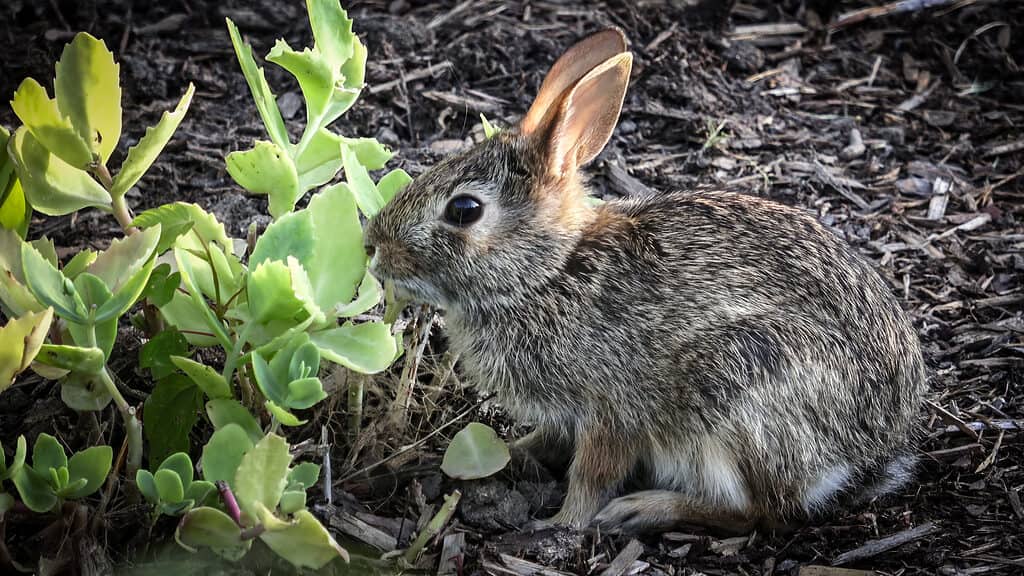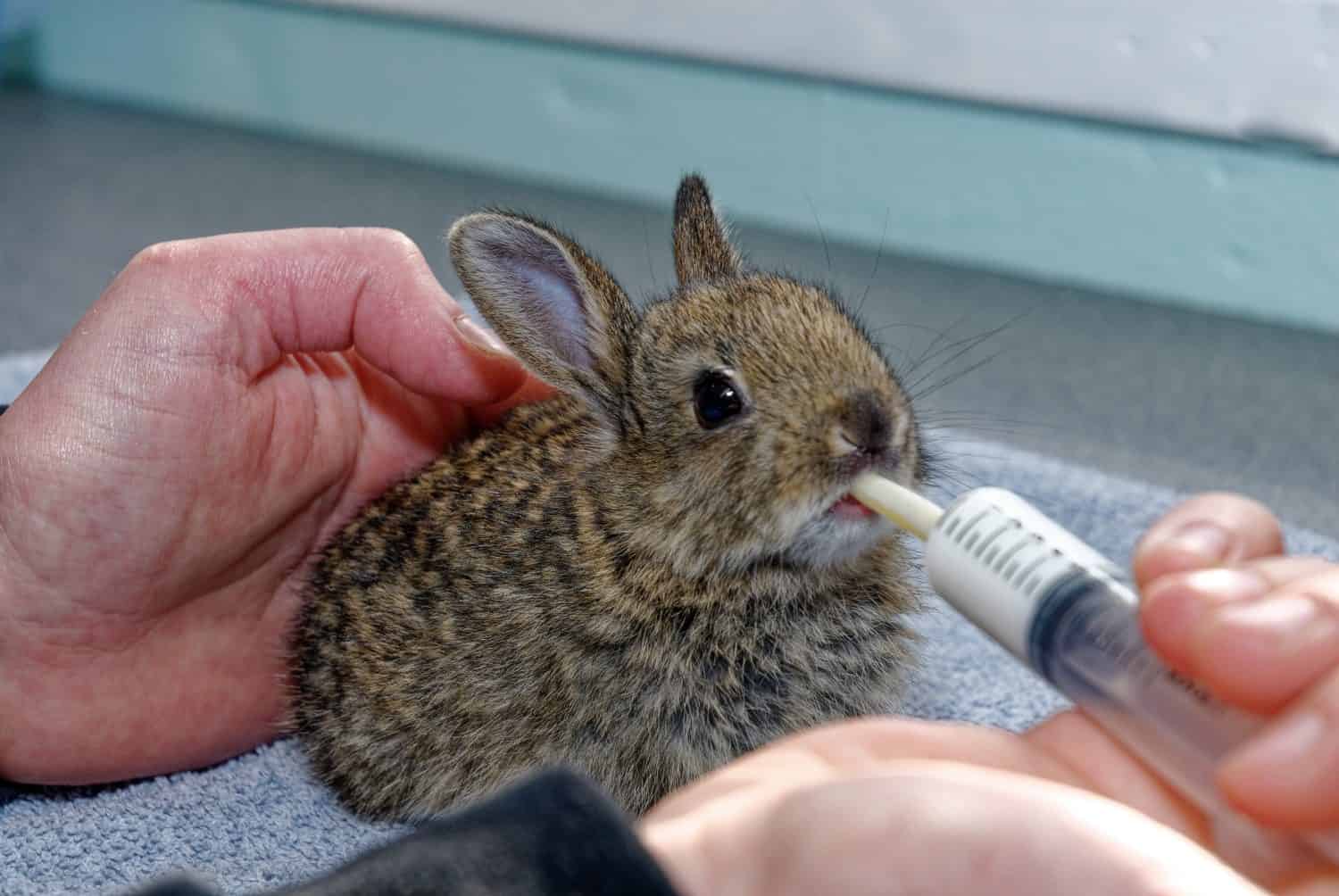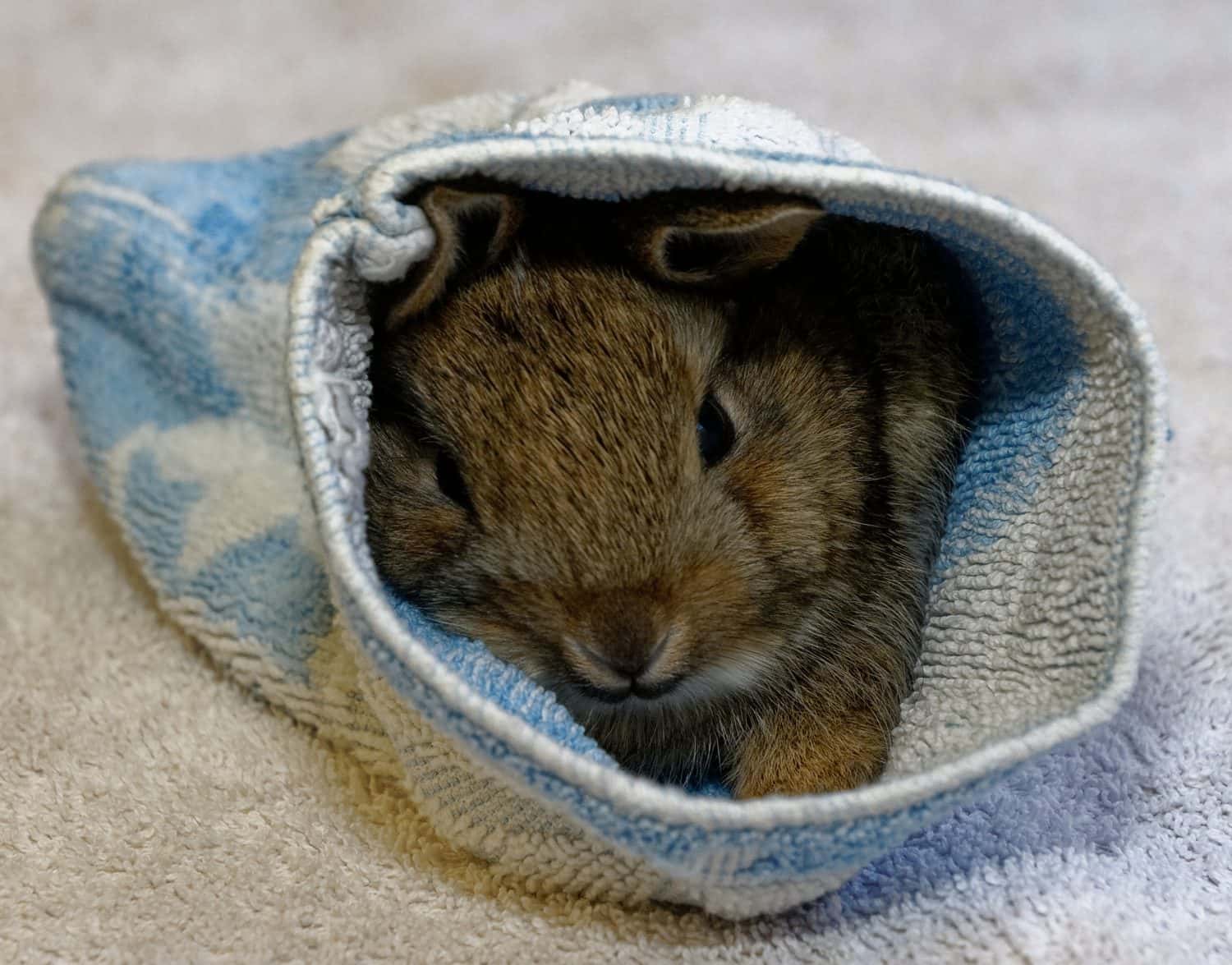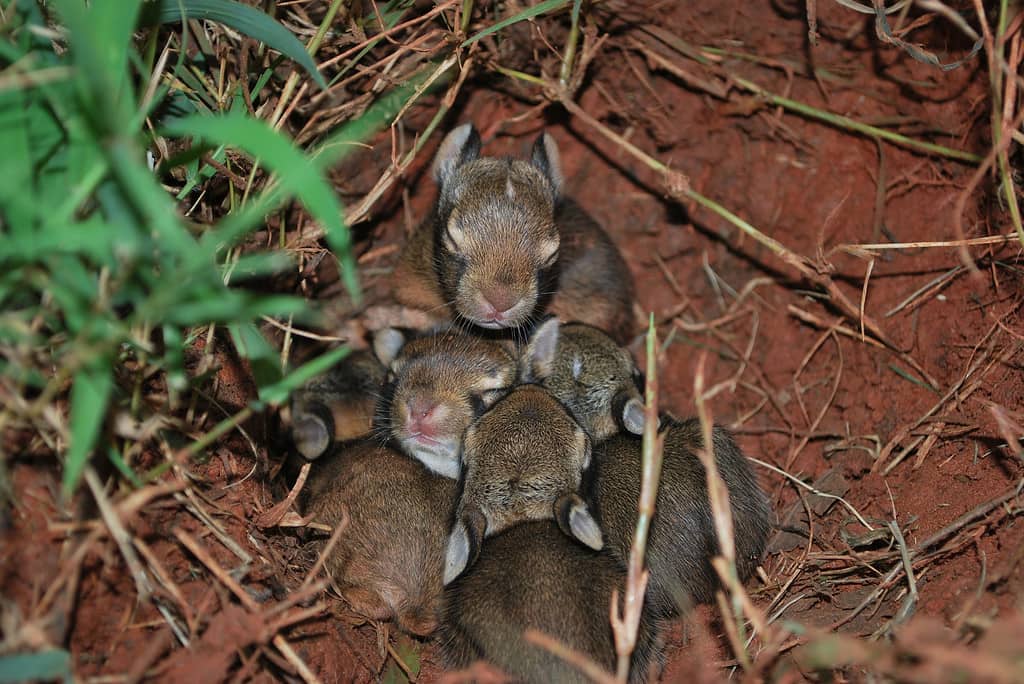Rabbits are popular pets, but they’re also common in the wild. If you live somewhere with open, grassy spaces, you have likely seen wild rabbits near your home. Between March and September, you may see wild baby rabbits as well. Many people who find baby rabbits wonder how to help and care for them. Here are five steps you can follow to ensure that any baby rabbits you find remain healthy and safe.
Step 1: Make Sure the Rabbit Needs Help

A rabbit who looks like this is most likely old enough to be alone.
©Labrynthe/Shutterstock.com
Many well-intentioned people take wild baby animals away from their mothers under the false impression that they are orphaned or abandoned. That is why it is important to make sure any baby you find is really in need before taking any further action. If you find a rabbit who is visibly injured or has been caught by a cat, call a veterinarian or wildlife rehabilitator immediately. For a healthy baby who is simply alone, however, it can be harder to tell if you should intervene.
If a rabbit is four inches long (about the size of an adult’s fist) and has open eyes, erect ears, and can hop well, then this rabbit is old enough to be independent. Rabbits develop quickly in order to escape from predators, so even rabbits that still look like babies may be able to take care of themselves.
If you find young, helpless rabbits in a nest, it still may be best to leave them alone. Mother rabbits only visit their young a few times a day to avoid attracting predators to the nest. If the nest has been disturbed, you can rebuild it with natural materials like grass or leaves. You can even move the nest up to five or six feet away if it is in immediate danger. Only do this if it is necessary, and avoid moving the nest too far away so the mother can still find it. Be sure to keep pets away from the nest.
If you are unsure whether the mother rabbit is returning to a nest, lay grass, twigs, or string across the nest in the shape of a tic-tac-toe grid. When the mother returns, she will move the grid aside to feed her babies. If the grid is undisturbed after 24 hours, the mother is not present, and you can take further action to help the babies. Babies who are visibly emaciated, dehydrated, or excessively crying are also likely to need help.
Step 2: Contact a Licensed Wildlife Rehabilitator

Wildlife rehabilitators provide specialized care to wildlife.
©Colin Seddon/Shutterstock.com
Once you have determined that a baby rabbit needs your help, your first course of action should be to contact a licensed wildlife rehabilitator. Baby rabbits are fragile and require specialized care, so their chances of survival will be much higher if you entrust them to a professional rather than attempting to care for them yourself.
If you do not know where to find a wildlife rehabilitator, search online for one in your area. In the U.S., most states have online listings of licensed rehabilitators. Even those that don’t may have governmental departments you can contact for help.
Call the rehabilitator before bringing in the rabbit. Most rehabilitators prefer or even require that you call them first, so they can prepare to receive the animal. The rehabilitator may also tell you how to capture, care for, or transport the animal, offering advice for your specific situation. For more general instructions, read on.
Step 3: Capture the Rabbit

A towel or other cloth can be used both to capture the rabbit and as bedding.
©Colin Seddon/Shutterstock.com
Before capturing a baby rabbit, prepare a container in which to transport the animal. Whichever container you choose should be sturdy and have a secure lid. Poke air holes in the lid so the rabbit can breathe. Inside the container, place soft cloth or bedding from the nest.
Wear thick gloves to handle the rabbit, and be extra careful to avoid letting the rabbit bite or scratch you, since wild animals can carry diseases. If the rabbits are young babies in a nest, gently pick them up and place them in the box. Avoid handling the rabbits more than necessary, as human contact will stress them out, and it is easy to injure them if you are not careful.
If the rabbit is an injured older rabbit, you can use a towel to catch them. Throw the towel on top of the rabbit, then gather up the towel, scooping up the animal in the process. Again, handle the rabbit very carefully and as little as possible.
Step 4: Keep the Rabbit Safe

Young babies like these can be kept in a box with bedding from their nest.
©shanelinkcom/iStock via Getty Images
If you are unable to transport the rabbit to the rehabilitator right away, keep the animal in the container. Put the container in a dark, quiet place, such as a closet or spare bedroom. Provide the rabbit with a source of warmth. You can use a heating pad set on low, a microwavable heat bag, a microwaved sock filled with dry rice, or a bottle of warm water. Cover the heat source with a cloth to prevent the rabbit from touching it directly, and keep it on one side of the container so the rabbit can move away from it if hot. If you are using a heating pad, put it underneath the container; other heat sources can be placed inside it.
Do not give the rabbit food or water unless the wildlife rehabilitator or a veterinarian instructs you to do so. It is easy to accidentally harm rabbits by giving them the wrong food or even by offering food or water in the wrong way. Resist the urge to constantly check on the rabbit. Most wild animals are afraid of humans, so your presence may stress them out. Do not handle the rabbit, and keep children and pets away.
Step 5: Transport

Successfully rehabilitated rabbits can be released safely into the wild.
©Mendenhall Olga/Shutterstock.com
Keep the rabbit in the container for transport to the rehabilitator. Secure the container on the seat or floor of your car, and make sure it is securely closed. Keep it in the body of your vehicle, not in the trunk or the bed of a pickup truck. Do not have someone hold the rabbit in the car as this may stress out the animal and create a risk of injury. Keep the car quiet during transport. Do not play the radio, and minimize talking. Make sure the container stays closed for the entire trip. If the rabbit escapes in the car, this poses a serious safety risk for both you and the rabbit.
Once you arrive at the rehabilitator, provide details on the rabbit’s rescue to help them determine the best way to provide care. If you want to help even more, consider donating to the rehabilitator. Rehabilitators are often short on resources, so they will appreciate any assistance. Even providing transportation to an animal in need is a big help. Once you have followed these steps, you can feel confident that you have done the right thing for wildlife.
The photo featured at the top of this post is © Jerry Morse/Shutterstock.com
Thank you for reading! Have some feedback for us? Contact the AZ Animals editorial team.






